-
How are exit signals triggered for vesicles/cargo?
Cargo themselves have exit signals. Soluble proteins bound by cargo receptors or transmembrane proteins that are bound by COP2 coat.
-
What happens after the COP2-coated vesicles lose their protein coat?
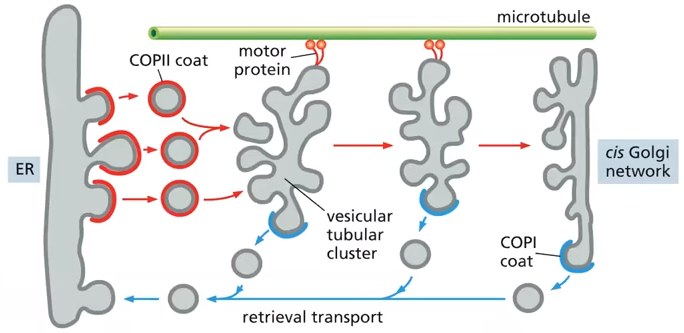
They fuse with each other to form a vesicular tubular cluster which then move to the Golgi.
-
How do vesicular tubular clusters form?
Using the v-snares and t-snares
-
How does retrieval transport work?
From vesicular tubular clusters or cis Golgi network back to ER using COP1-coated vesicles.
-
How do proteins get back to the ER?
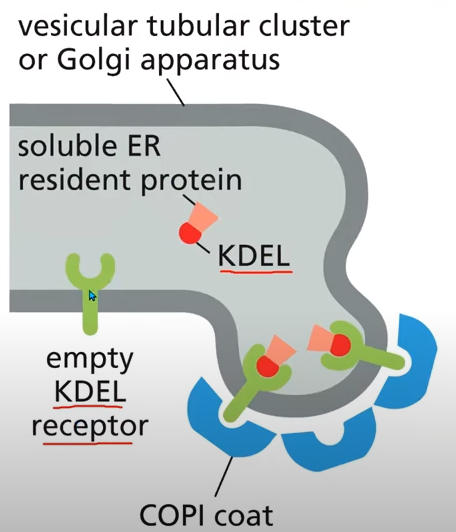
They have ER retrieval signals. Soluble ER proteins have a retrieval signal(KDEL) and are bound by KDEL receptors
-
How does the KDEL know when to bind to the signals?
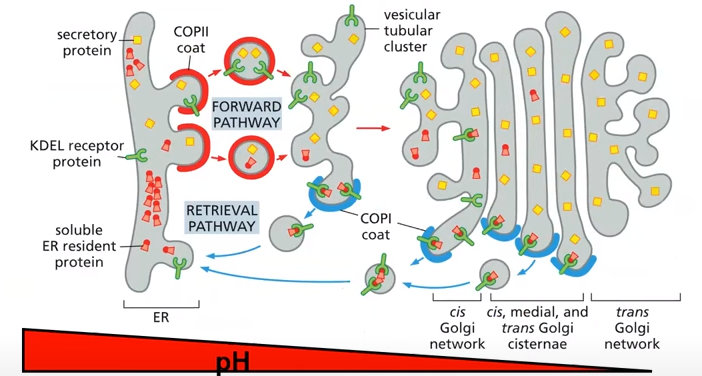
At Golgi there is high affinity for KDEL , in ER there is low affinity for KDEL.
This is regulated by pH using a ATPase H+ pump. Lower pH it binds
-
What are two other possible mechanisms in which proteins go back to their correct place?
1. Different transport rates
Some Golgi enzymes cycle between ER and Golgi, but transport to the ER at a slower rate
2. Proteins retained in resident compartment
Proteins that function in the same compartment form large complexes which prevent packaging into transport vesicles
-
What is the vesicular transport model?
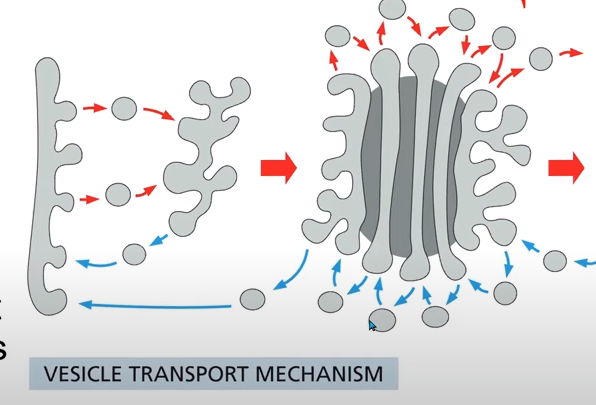
COP1-coated vesicles move cargo between Golgi cisterna
Retrograde transport vesicles also COP1 return escaped ER proteins and Golgi enzymes
-
What is the cisternal maturation model
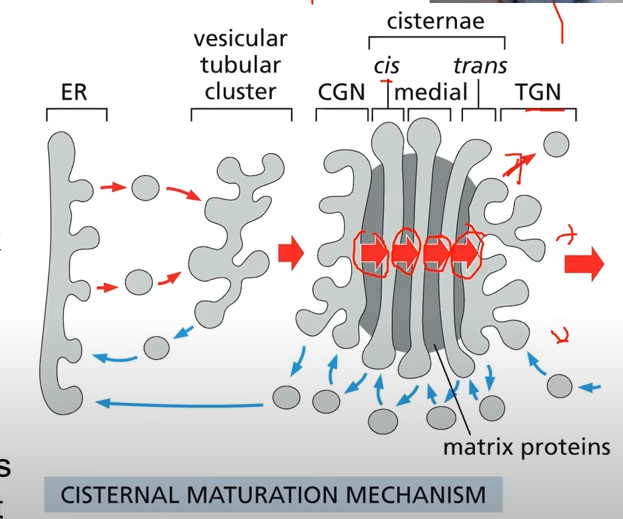
Cisternae move through Golgi apparatus
Vesicular tubular clusters from the ER fuse to become the cis Golgi network
Each Cisterna becomes the next cisterna
Existing trans cisterna moves to the TGN
TGN is then broken into vesicles
Retrograde transport is still COP1
-
What is the TGN?
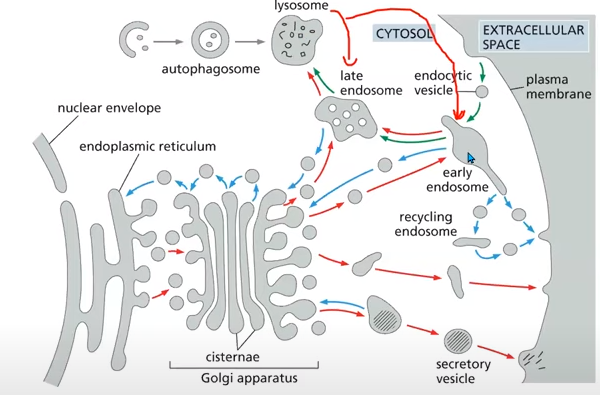
Complex network of membranes and vesicles with a major branch point and where proteins are sorted into different vesicles
-
What's another name for cargo?
Lysosomal hydrolases
-
What are acid hydrolases?
Synthesized in the ER and processed in the Golgi
Degrade macromolecules
Active at an acidic pH
~5 pH
-
How does the Mannose-6-phosphate receptor work (M6P)?
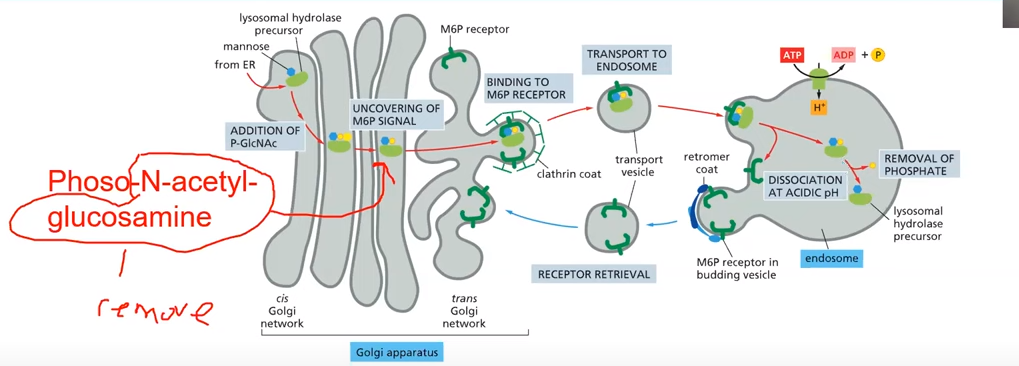
One of those acidic hydrolases goes to the Golgi from the ER and an N-linked sugar is there also a mannose. On one of the mannose you add a P-GlcNAc (Phoso-N-acetyl-glucosamine). After you add that you remove the N-acetyl glucosamine and what you have left is the M6P. The clathrin vesicle forms with M6P receptors which bind M6P. Moved to endosome

